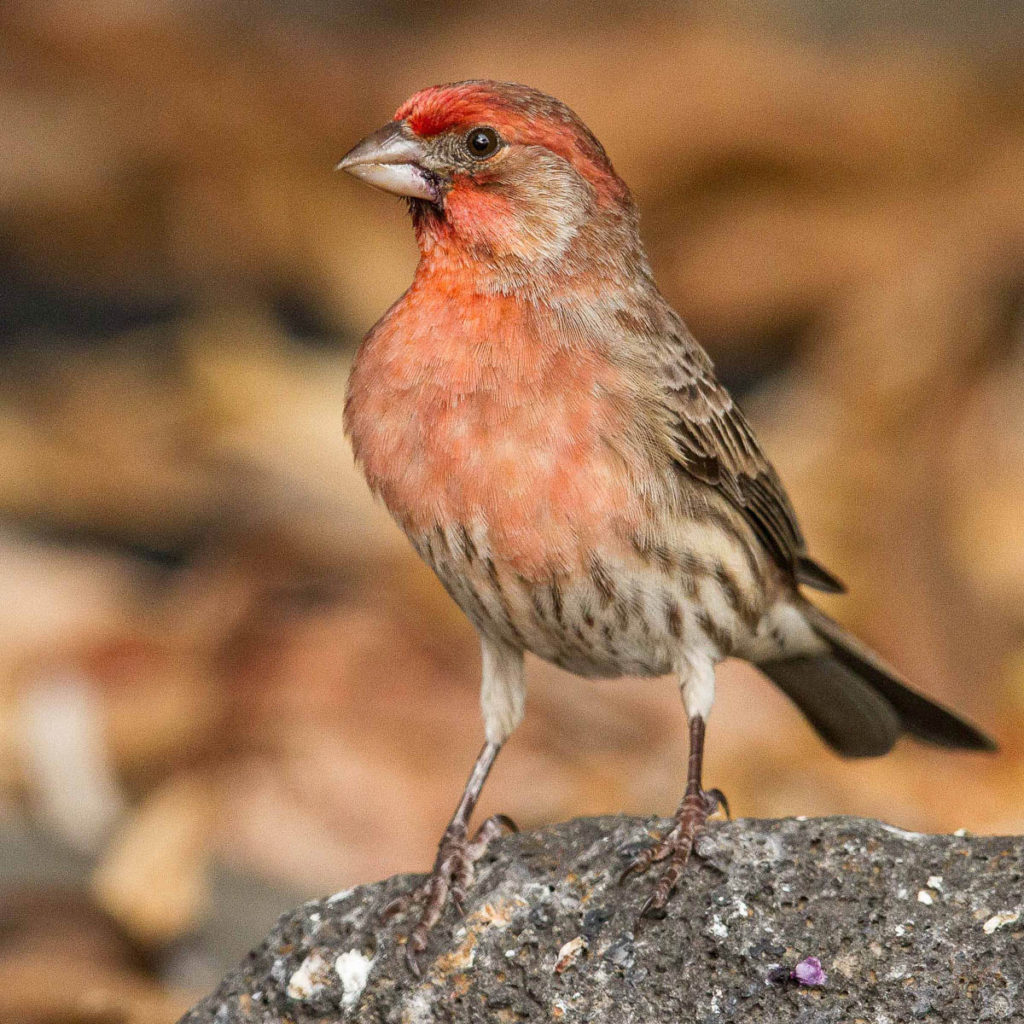7 Types of Finches with Red Head with Pictures
Table Of Content

The Brown-headed Cowbird often lays its eggs in House Finches nests. When this happens, the eggs may be removed by the Finches or the nest may be abandoned. The males either mock feed or regurgitate food in the female's mouth. It is delivered by the males during the breeding season to attract mates and establish territories. Becoming a very abundant and assessable species, the house finch had been introduced to the U.S. in the 1940s and had colonized the eastern part of the country. They had arrived in Michigan less than 10 years before Hill began to pursue studying them.
More About These Birds
Contrary to the flamboyant red plumage of males, female house finches boast a subtler charm. The brilliance of the red coloration is not merely aesthetic; it serves a significant purpose in the bird’s reproductive success. In many bird species, including the house finch, females are naturally drawn to males with more vibrant feathers. This trait is an evolutionary signal, indicating the health and genetic fitness of potential mates. Adults have a long, square-tipped brown tail and are a brown or dull-brown color across the back with some shading into deep gray on the wing feathers.
House Finch or Purple Finch? Here's How to Tell Them Apart - National Audubon Society
House Finch or Purple Finch? Here's How to Tell Them Apart.
Posted: Wed, 28 Dec 2016 08:00:00 GMT [source]
Seeing Red: What the Color of House Finches Can Tell Us
The Common Redpoll (Acanthis flammea) is a small finch species found in North America and Europe. This species is also known to hybridize with other finch species, such as the Purple Finch and the House Finch. It feeds mainly on small seeds and insects, which it forages for on the ground. The Red Siskin (Carduelis cucullata) is a small finch species found in South America, from Venezuela to northern Argentina.
Nesting Habits
Once the nest is complete, the female house finch lays a clutch of eggs, usually numbering between 3 to 6. The eggs are pale blue or greenish-white with small brown speckles. The female incubates the eggs, while the male provides her with food during this period.
Similar Species to House Finches
The main factors that influence the lifespan of house finches include predation, disease, and environmental conditions. While seeds form the core of their , house finches also rely on supplemental food sources, especially during certain times of the year. These additional food options provide the necessary nutrients and variety to support their overall health and well-being. In more natural habitats, House Finches can be found in areas with shrubs and trees that provide suitable nesting sites.

Why Male House Finches Can Be Different Colors
All this information will really help you to identify those finches with red heads. So take a look and see if you can spot the bird you are looking for. The Orange-headed Finch is a small, sparrow-like finch with a short tail and orange head. This bird is mostly gray in color, with a bright red head, nape, and wings. Conservation efforts play a vital role in safeguarding the future of house finches.
House Finch or Purple Finch? Here’s How to Tell Them Apart
Whether a bird is red, orange, or yellow is the product of the ratio of the different pigments in feathers. Bird get their colorations specifically through yellow dietary carotenoids, which usually consists of vegetable matter. Purple Finches aren’t purple, and House Finches don’t stick to houses. But that’s only the start of the confusion around these two doppelgangers. A red and brown bird at your feeder might be either one throughout much of the United States.
Breeding
House Finches are common and widespread across most of North America, including Hawaii. Meanwhile, Purple Finches nest in Canada, along the Pacific, and in the Northeast. In winter they migrate as far south as Florida, but they don't typically visit the Interior West at any time of year.
Diet
Susceptible to House Finch eye disease, an illness that gives them swollen eyes and leaves them lethargic. If sick birds are seen around feeders, remove feeders and clean with diluted bleach solution to reduce spread. You can find Hoary Redpolls in sheltered tundra birch forests and open subarctic evergreen forests in the summer.
A Squirrel Proof feeder is recommended for sunflower seed as squirrels will make off with the seed before the birds have a chance to eat. House finches make nests in a range of places, including woodpecker holes, hanging plants, door wreaths, and sometimes birdhouses. While every state except Alaska is now home to the house finch, it wasn't always the case. Once popular pets sold as 'Hollywood Finches', owners and sellers of house finches released them into the wild after the Migratory Bird Treaty Act passed in 1918.
Observing clusters of nests in close quarters showcases their adaptability and ability to thrive in diverse environments. Flocks of House Finches are common at bird feeders during the non-breeding season. Some flocks may stay together through the breeding season as well, and birds will use bird feeders year round. They often forage on the ground, but also perch on weeds, shrubs, or trees. Both males and females may sing during the breeding season, and males sing year round. The female house finch (and juveniles) are brown everywhere and streaked.
Comments
Post a Comment